FAA1 / YOR317W Overview
- Standard Name
- FAA1 1 2
- Systematic Name
- YOR317W
- SGD ID
- SGD:S000005844
- Feature Type
- ORF , Verified
- Description
- Long chain fatty acyl-CoA synthetase; activates fatty acids with a preference for C12:0-C16:0 chain lengths; role in the competitive import of long-chain fatty acids and sphingoid long-chain bases; accounts for most acyl-CoA synthetase activity; localizes to lipid particles and the plasma membrane; role in sphingolipid-to-glycerolipid metabolism; forms ER foci upon replication stress; faa1 faa4 double null complemented by any of human ACSBG1, ACSL1, 3, 4, 5, 6, SLC27A2, or 4 1 3 4 5 6 7 8 9
- Name Description
- Fatty Acid Activation 1
- Paralog
- FAA4 10
- Comparative Info
-
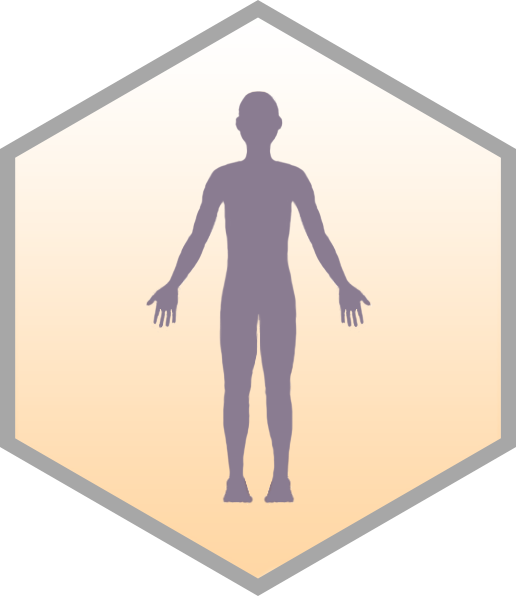
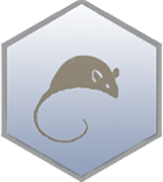
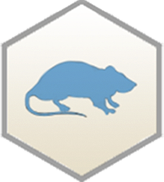
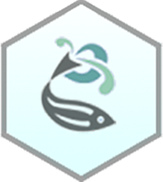
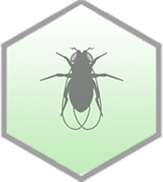
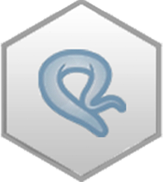
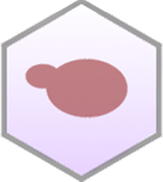
Sequence
The S. cerevisiae Reference Genome sequence is derived from laboratory strain S288C. Download DNA or protein sequence, view genomic context and coordinates. Click "Sequence Details" to view all sequence information for this locus, including that for other strains.
- Summary
- FAA1/YOR317W is located on the right arm of chromosome XV between replication origin ARS1528 and HSH49 U2-snRNP associated splicing factor; coding sequence is 2103 nucleotides long with 17 SNPs, 3 of which cause amino acid polymorphisms
Analyze Sequence
S288C only
BLASTN | BLASTP | Design Primers | Restriction Fragment Map | Restriction Fragment Sizes | Six-Frame Translation
S288C vs. other species
BLASTN vs. fungi | BLASTP at NCBI | BLASTP vs. fungi
S288C vs. other strains
Protein
Basic sequence-derived (length, molecular weight, isoelectric point) and experimentally-determined (median abundance, median absolute deviation) protein information. Click "Protein Details" for further information about the protein such as half-life, abundance, domains, domains shared with other proteins, protein sequence retrieval for various strains, physico-chemical properties, protein modification sites, and external identifiers for the protein.
- Summary
- Faa1p is 700 amino acids long, shorter-lived, moderate in abundance; has an AMP-binding site; acetylated on K636 and K644, succinylated on 3 lysines, ubiquitinylated on 5 lysines, phosphorylated on 13 residues
- Length (a.a.)
- 700
- Mol. Weight (Da)
- 77868.1
- Isoelectric Point
- 7.69
- Median Abundance (molecules/cell)
- 24250 +/- 10059
- Half-life (hr)
- 7.8
Alleles
Curated mutant alleles for the specified gene, listed alphabetically. Click on the allele name to open the allele page. Click "SGD search" to view all alleles in search results.
View all FAA1 alleles in SGD search
Gene Ontology
GO Annotations consist of four mandatory components: a gene product, a term from one of the three Gene Ontology (GO) controlled vocabularies (Molecular Function, Biological Process, and Cellular Component), a reference, and an evidence code. SGD has manually curated and high-throughput GO Annotations, both derived from the literature, as well as computational, or predicted, annotations. Click "Gene Ontology Details" to view all GO information and evidence for this locus as well as biological processes it shares with other genes.
- Summary
- Fatty acid-CoA ligase involved in long-chain fatty acid metabolism and import; contributes to sphingoid transport; localizes to lipid bodies and plasma membrane and to mitochondrion and endoplasmic reticulum in high-throughput studies
View computational annotations
Molecular Function
- Manually Curated
- enables long-chain fatty acid-CoA ligase activity (IMP, IGI, IDA)
- enables medium-chain fatty acid-CoA ligase activity (IDA)
Biological Process
- Manually Curated
- involved in long-chain fatty acid import into cell (IGI, IMP)
- involved in long-chain fatty-acyl-CoA metabolic process (IGI, IMP)
- involved in sphingoid long-chain base transport (IGI, IMP)
Cellular Component
- Manually Curated
- located in endoplasmic reticulum (HDA)
- located in lipid droplet (IDA)
- located in mitochondrial outer membrane (HDA)
- located in mitochondrion (HDA)
- located in plasma membrane (HDA, IDA)
Pathways
Phenotype
Phenotype annotations for a gene are curated single mutant phenotypes that require an observable (e.g., "cell shape"), a qualifier (e.g., "abnormal"), a mutant type (e.g., null), strain background, and a reference. In addition, annotations are classified as classical genetics or high-throughput (e.g., large scale survey, systematic mutation set). Whenever possible, allele information and additional details are provided. Click "Phenotype Details" to view all phenotype annotations and evidence for this locus as well as phenotypes it shares with other genes.
- Summary
- FAA1/YOR317W is a non-essential gene in reference strain S288C; null mutant shows reduced incorporation of myristate into phospholipids at elevated temperatures and reduced accumulation of long-chain fatty acids; null mutant is sensitive to cerulenin and displays decreased survival in stationary phase; in large-scale studies, homozygous null mutant displays increased competitive fitness; overproduction confers enhanced invasive growth
Classical Genetics
Disease
Disease Annotations consist of three mandatory components: a gene product, a term from the Disease Ontology (DO) controlled vocabulary and an evidence code. SGD provides manually curated DO Annotations derived from the literature. Click "Disease Details" to view all Disease information and evidence for this locus as well as diseases it shares with other genes.
- Summary
- Yeast FAA1 is homologous to human SLC27A2, SLC27A4, ACSBG1, ACSL1, ACSL3, ACSL4, ACSL5, and ACSL6, and has been used to study Sjogren-Larsson syndrome
Manually Curated
Interaction
Interaction annotations are curated by BioGRID and include physical or genetic interactions observed between at least two genes. An interaction annotation is composed of the interaction type, name of the interactor, assay type (e.g., Two-Hybrid), annotation type (e.g., manual or high-throughput), and a reference, as well as other experimental details. Click "Interaction Details" to view all interaction annotations and evidence for this locus, including an interaction visualization.
- Summary
- The faa1 null mutant is viable; the null mutant of paralog faa4 is viable; the faa1 faa4 double mutant is inviable or displays a growth defect.
209 total interactions for 167 unique genes
Physical Interactions
- Affinity Capture-MS: 38
- Affinity Capture-RNA: 5
- Affinity Capture-Western: 4
- Co-fractionation: 1
- Co-purification: 1
- Proximity Label-MS: 3
- Reconstituted Complex: 1
- Two-hybrid: 3
Genetic Interactions
- Dosage Growth Defect: 1
- Dosage Lethality: 1
- Dosage Rescue: 1
- Negative Genetic: 94
- Phenotypic Enhancement: 6
- Phenotypic Suppression: 8
- Positive Genetic: 29
- Synthetic Growth Defect: 9
- Synthetic Lethality: 3
- Synthetic Rescue: 1
Regulation
The number of putative Regulators (genes that regulate it) and Targets (genes it regulates) for the given locus, based on experimental evidence. This evidence includes data generated through high-throughput techniques. Click "Regulation Details" to view all regulation annotations, shared GO enrichment among regulation Targets, and a regulator/target diagram for the locus.
- Summary
- FAA1 encodes an acyl-CoA synthetase (ACS) that catalyzes the thioestrification of fatty acids with coenzyme A, thus producing activated intermediates, acyl-CoAs, that are key participants in lipid biosynthesis, energy production by beta-oxidation, protein acylation, fatty acid import and fatty-acid mediated regulation of transcription. There are four other known ACSs in yeast, Faa2p, Faa3p, Faa4p and Fat1p, that differ in substrate specificity and subcellular localization. Faa1p provides over 90% of the ACS activity under standard growth conditions. It shares substrate specificity for long chain (C12:0-C16:0) fatty acids and subcellular localization (ER, lipid droplets) with Faa4p, and both Faa1p and Faa4p are believed to have partially overlapping cellular roles. Under anaerobic conditions, or in mutants defective in fatty acid synthesis, FAA1 and FAA4 become essential for growth due to their involvement in the uptake of exogenous fatty acids. This fatty acid import, called vectorial acylation, is known to require Fat1p and either Faa1p or Faa4p. By their impact on fatty acid import, Faa1p and Faa4p affect fatty acid-dependent transcriptional regulation of multiple genes involved in fatty acid synthesis and/or desaturation that are under control of transcription factors Mga2p/Spt23p and Oaf1p/Pip2p, respectively. Specific mechanisms of this regulatory circuit(s) remain to be uncovered. Expression of FAA1 remains steady during logarithmic growth but it increases significantly under heat shock or when cells enter stationary phase. In contrast, expression of FAA4 decreases under heat shock and in stationary phase. Mechanisms of this transcriptional regulation are not known, but the opposing responses may indicate deeper differences in the biological roles for Faa1p and Faa4p. In addition to regulation of expression, Faa1p and Faa4p appear to be controlled by a serine protease Nma111p that is involved in heat shock response and apoptosis. The role of Nma111p may be to maintain lipid homeostasis by limiting the ACS activity and to prevent lipotoxicity, similar to the effects of increased ACS activity in humans.
- Regulators
- 18
- Targets
- 0
Expression
Expression data are derived from records contained in the Gene Expression Omnibus (GEO), and are first log2 transformed and normalized. Referenced datasets may contain one or more condition(s), and as a result there may be a greater number of conditions than datasets represented in a single clickable histogram bar. The histogram division at 0.0 separates the down-regulated (green) conditions and datasets from those that are up-regulated (red). Click "Expression Details" to view all expression annotations and details for this locus, including a visualization of genes that share a similar expression pattern.
Summary Paragraph
A summary of the locus, written by SGD Biocurators following a thorough review of the literature. Links to gene names and curated GO terms are included within the Summary Paragraphs.
Last Updated: 2010-02-11
Literature
All manually curated literature for the specified gene, organized into topics according to their relevance to the gene (Primary Literature, Additional Literature, or Review). Click "Literature Details" to view all literature information for this locus, including shared literature between genes.